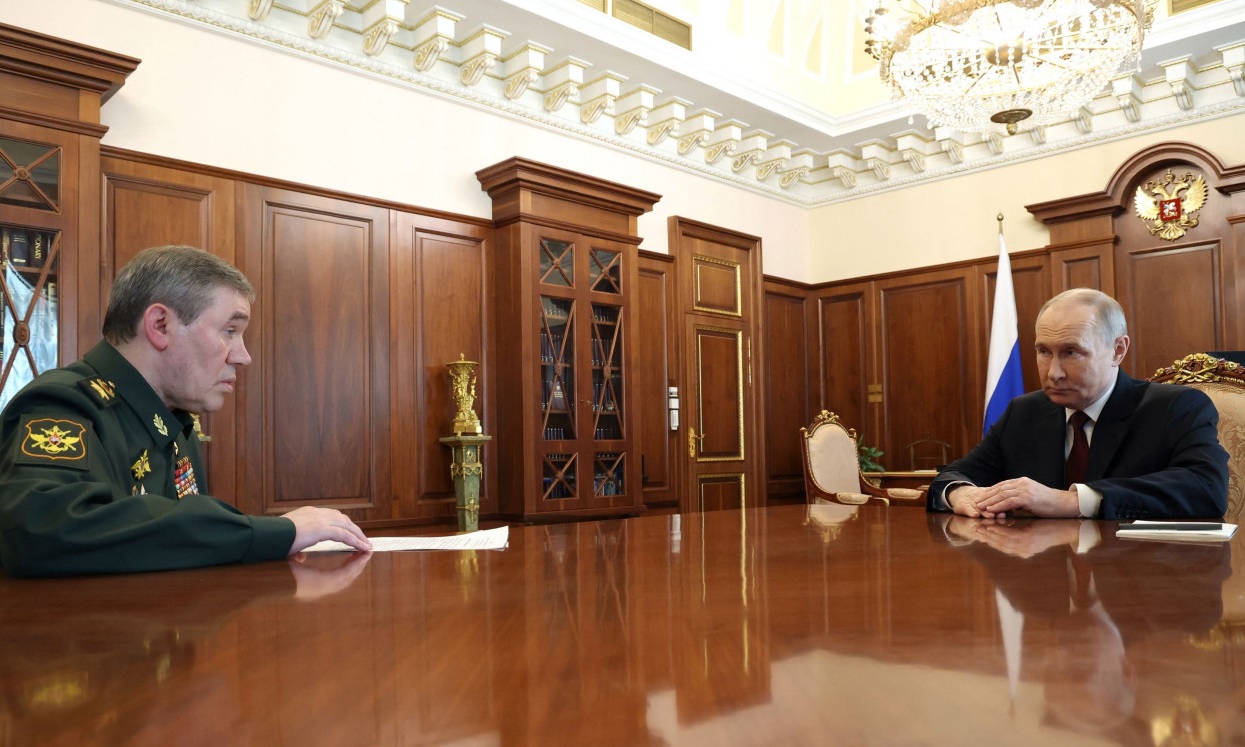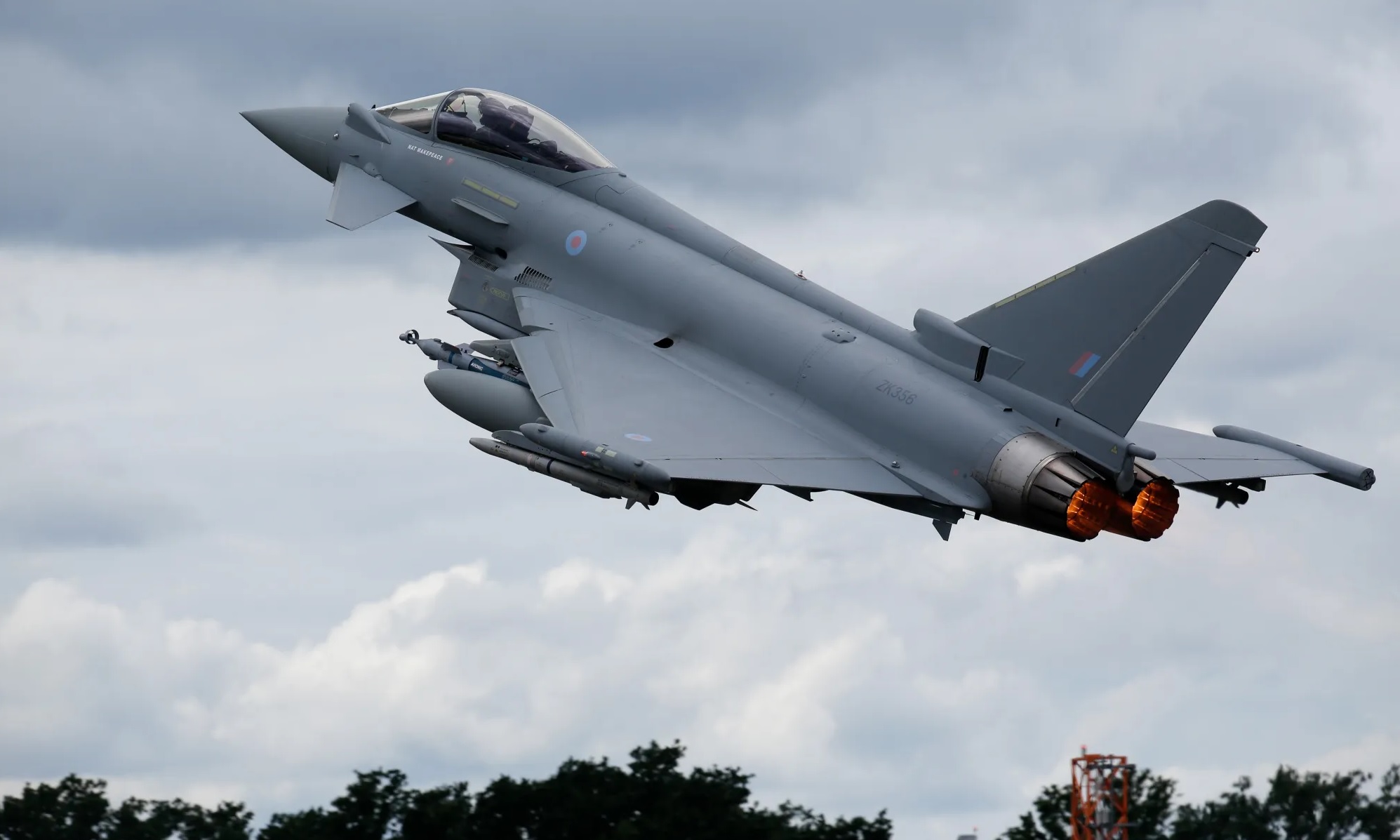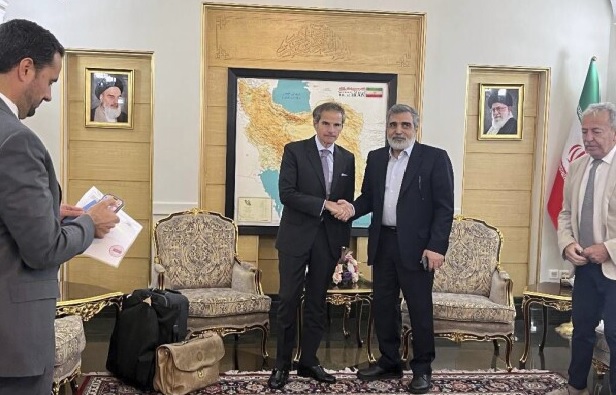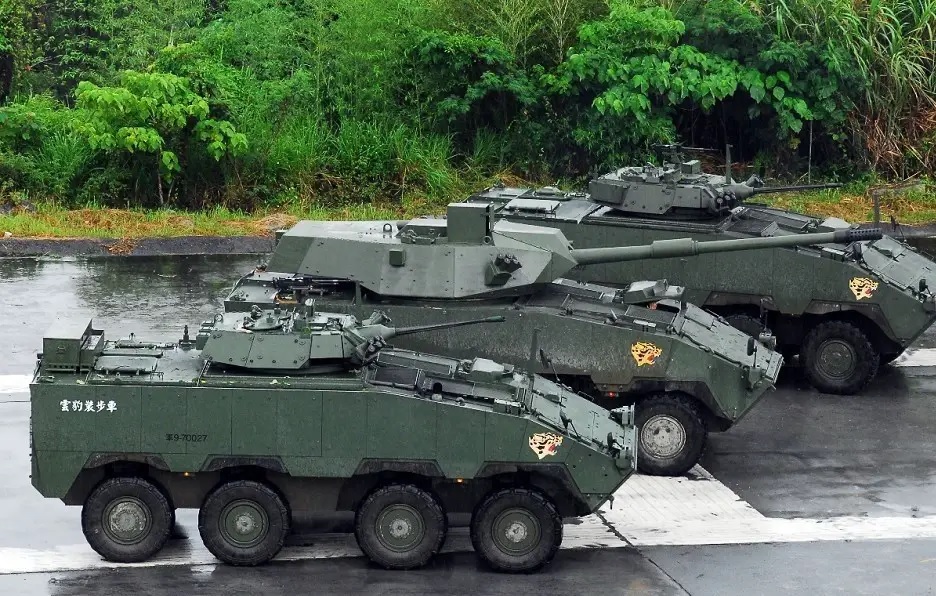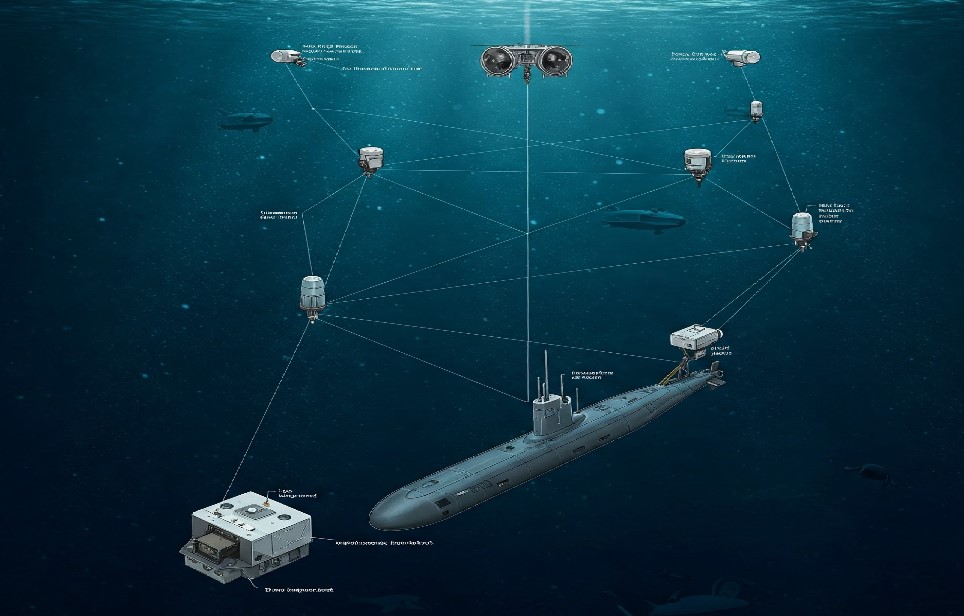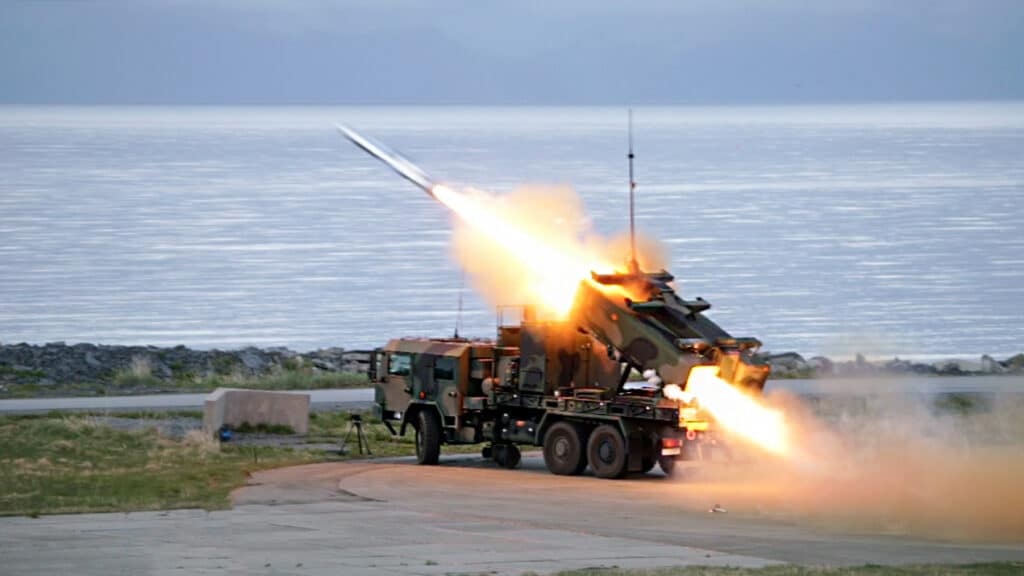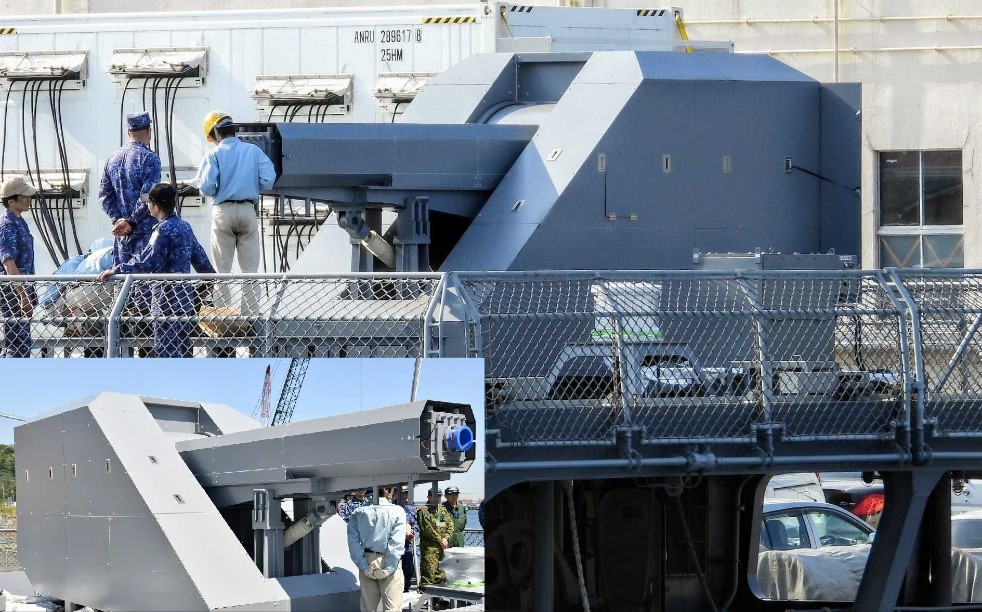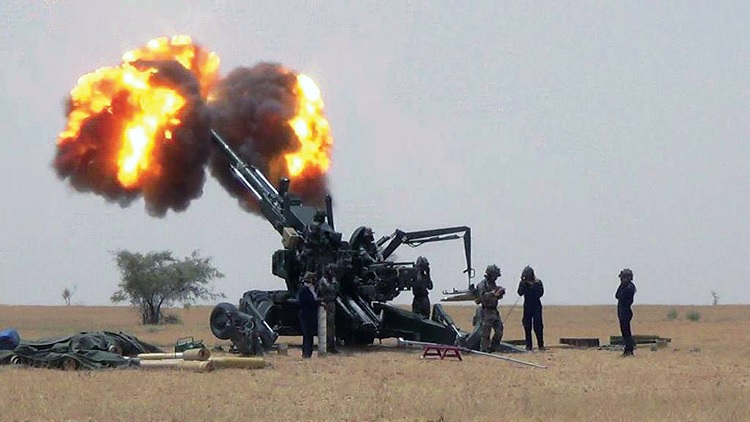India
India is on the verge of a major breakthrough in its journey toward developing a next-generation fighter aircraft. According to the Chairman of the Defence Research and Development Organisation (DRDO), Dr. Samir V. Kamat, the country is expected to finalize a high-profile international partnership within the next two to three months to jointly develop a powerful sixth-generation jet engine. This engine will power future variants of the Advanced Medium Combat Aircraft (AMCA), particularly the Mk2 version, which is currently in the planning stage. Dr. Kamat made this announcement during a defence event in Kurnool, Andhra Pradesh, on April 13, 2025. He stated that discussions with four leading international aerospace companies are in the final stages. These companies are believed to include Safran from France, General Electric (GE) from the United States, Rolls-Royce from the United Kingdom, and possibly NPO Saturn from Russia—all global giants in advanced engine development. The engine being developed through this collaboration is expected to deliver between 110 to 130 kilonewtons (kN) of thrust. One of its standout features will be Variable Cycle Engine (VCE) technology. Unlike conventional engines, VCEs can adapt their airflow depending on the flight condition, allowing for better fuel efficiency during cruising and more thrust during combat situations. This innovation can lead to up to 30% improvement in range and 20% better acceleration, giving India’s future jets a distinct edge. Such high-end features are crucial for staying competitive against the likes of the United States’ Next Generation Air Dominance (NGAD) program and China’s J-XX series. With global air combat capabilities rapidly evolving, India is aiming to ensure that its future aircraft can not only keep pace but also stand out in terms of speed, stealth, and advanced warfare technologies. The indigenous AMCA program, approved by the Indian government in 2024 with an initial funding of ₹15,000 crore, is a two-phase project. The AMCA Mk1 variant will use the already selected GE F414 engines (98 kN thrust), with its first flight expected around 2030 and squadron-level service likely by 2035. The more advanced AMCA Mk2, anticipated to debut around 2040, will require this new, more powerful engine to meet its high-performance goals—such as supercruise capability (flying at supersonic speeds without afterburners) and integration of futuristic systems like AI-guided drone swarms and laser-based weapons. India's Gas Turbine Research Establishment (GTRE), located in Bengaluru, will lead the Indian side of the engine project. GTRE brings valuable experience from the earlier Kaveri engine program, which achieved thrust levels of up to 81 kN. However, a sixth-generation engine is an entirely different challenge—one that will demand an estimated investment of $4–5 billion and extensive technical expertise. This is why, as Dr. Kamat emphasized, international collaboration is not just preferable but essential. A joint venture will help India overcome the complex challenges of designing such an engine while cutting down on development time and minimizing technical risks. While Safran has long been seen as a front-runner—especially following high-level diplomatic talks during Prime Minister Narendra Modi’s 2023 visit to Paris—the field remains open. General Electric already has a strong relationship with India through the F414 deal, and Rolls-Royce has shown clear interest in co-developing a 110 kN engine. NPO Saturn, with its history of working on advanced propulsion for Russian fighter jets, is also considered a formidable contender. The decision expected in the coming months will mark a defining moment for India's aerospace ambitions. A successful partnership will not only power the next generation of Indian fighter aircraft but also strengthen India's position as a leader in cutting-edge aviation technology on the global stage.
Read More → Posted on 2025-04-20 15:49:46World
Defence technology leader V2X Inc. has landed a significant $62 million contract to continue maintaining and enhancing the COBRA DANE radar system, a critical U.S. Space Force asset located at Eareckson Air Station on Shemya Island, Alaska. This contract highlights V2X’s long-standing role in ensuring the continuous performance and technological advancement of one of the most sophisticated radar systems in America's defence arsenal. Standing at an impressive 120 feet tall with a 95-foot-wide phased-array radar face, the COBRA DANE system has the capability to detect and track objects over 2,000 miles away. Its high-powered radar can observe both ballistic missile activity and orbital movements in space, contributing significantly to the U.S. ballistic missile defence shield and space domain awareness. Originally commissioned in the 1970s, the COBRA DANE radar has since evolved into a cornerstone of national security, now operated by the U.S. Space Force. It provides real-time data on missile launches, satellite behavior, and space debris—helping protect critical infrastructure and monitor potential threats in both atmospheric and space environments. “V2X has been the trusted partner in ensuring the continuous operational readiness of COBRA DANE,” said Jeremy C. Wensinger, President and CEO of V2X. He also emphasized the company's efforts in integrating engineering upgrades to extend the radar's capabilities even further. The radar’s advanced phased-array technology allows it to scan large areas of the sky quickly and efficiently without the need for moving parts, making it highly reliable and efficient for round-the-clock surveillance. The newly awarded contract will be in effect until March 2027. During this time, V2X will provide full-spectrum mission support—encompassing system sustainment, technical upgrades, and ongoing operations support. This commitment ensures that COBRA DANE remains at peak performance, providing early warning and surveillance essential for both missile tracking and space situational awareness. In a rapidly evolving global threat landscape, V2X’s ongoing support of COBRA DANE reinforces the radar’s status as a key player in protecting U.S. interests both on Earth and in space.
Read More → Posted on 2025-04-20 15:45:53World
Russian President Vladimir Putin has announced a short-term ceasefire in Ukraine to mark the Orthodox Easter holiday, pausing military actions for just over 30 hours. The Kremlin confirmed that the ceasefire would begin at 6 p.m. Moscow time on Saturday and last until midnight on Sunday, following Easter celebrations. Speaking during a meeting with Russia’s Chief of General Staff Valery Gerasimov, President Putin said the decision was made for humanitarian reasons. “Guided by humanitarian considerations, today from 6 p.m. to midnight on Sunday, the Russian side declares an Easter truce,” he stated. He added that all Russian troops were ordered to stop military activities during this window. However, Putin also cautioned that Russian forces should remain alert for any potential violations by Ukraine. “We assume that the Ukrainian side will follow our example,” he said, while instructing commanders to be prepared to respond to any “provocations or aggressive actions.” The Russian Defence Ministry echoed this message, stating that instructions regarding the truce had been issued to all commanders operating in the conflict zones. The ceasefire, the ministry said, would be observed “if it is mutually respected” by the Ukrainian side. Despite the temporary ceasefire, the conflict remains far from over. Just hours before the truce was to take effect, Gerasimov reported significant military gains in the border region of Kursk. He claimed that Russian forces had reclaimed nearly all of the territory that had been captured by Ukrainian troops during an incursion in August of the previous year. “In the areas of the Kursk region where Ukraine armed forces mounted an incursion, the main part of the territory is now liberated. That’s 1,260 square kilometres, 99.5 per cent,” Gerasimov said during the televised meeting with Putin. The Russian Ministry of Defence also claimed control of the village of Oleshnya, located near the Ukraine border. According to their statement, this was achieved through ongoing offensive operations by units from the “North” military group. The situation in nearby Gornal, however, remains contested, with reports of fierce fighting continuing in the area. Russian state media suggested that Ukrainian troops were still holding parts of Gornal, about 11 kilometers south of Oleshnya. The battle for full control of the Kursk region is ongoing, and there has been no official confirmation from Ukrainian authorities regarding the Russian claims. Meanwhile, the Ukrainian Air Force reported a major overnight drone assault from Russia involving 87 drones, including decoys. Of these, 33 were shot down and 36 others likely disrupted by electronic countermeasures. Russian strikes also caused damage in other parts of Ukraine. Farms in the Odesa region were hit, and fires broke out in Sumy, although emergency services managed to contain the blazes without reported casualties. Adding to the tense atmosphere, Russia’s Defence Ministry said it had intercepted two Ukrainian drones overnight as well. While the Easter ceasefire offers a brief pause in hostilities, it appears unlikely to bring about any long-term relief in the ongoing conflict. Both sides remain deeply entrenched, and even amid religious observances, the war shows little sign of slowing.
Read More → Posted on 2025-04-19 15:09:49India
India is on the verge of a major milestone in its nuclear energy journey with the expected commissioning of its first Prototype Fast Breeder Reactor (PFBR) in Kalpakkam, Tamil Nadu, by September 2026. This reactor marks a significant advancement in the country’s ambitious three-stage nuclear programme, which aims to utilize its vast thorium reserves and minimize nuclear waste. What is a Fast Breeder Reactor? A Fast Breeder Reactor (FBR) is a type of nuclear reactor that produces more fissile material than it consumes. Unlike conventional reactors that mainly use uranium, FBRs are designed to “breed” fuel, making them highly efficient. The PFBR at Kalpakkam is a 500 megawatt (MW) reactor that uses a unique plutonium-based mixed oxide (MOX) fuel and liquid sodium as a coolant, instead of water. This technology not only recycles used nuclear fuel but also generates more fuel, making it an essential component for sustainable and long-term nuclear energy production. Key Features and Specifications Type: Prototype Fast Breeder Reactor (PFBR) Location: Kalpakkam, Tamil Nadu Capacity: 500 MW Fuel: Mixed oxide (MOX) fuel composed of plutonium and uranium Coolant: Liquid sodium Operator: Bharatiya Nabhikiya Vidyut Nigam Limited (BHAVINI) First Criticality Expected: By 2025-26 Full Commissioning: Targeted by September 2026 Why is the PFBR Important? The commissioning of the PFBR marks the beginning of the second stage in India’s nuclear programme. In this stage, the spent fuel from the existing Pressurised Heavy Water Reactors (PHWRs) is reprocessed and used in the PFBR. This not only reduces radioactive waste but also leads to energy self-sufficiency by creating more fuel than is consumed. In the third stage, India plans to use thorium-based reactors, powered by the plutonium bred in fast reactors like the PFBR. India has abundant thorium reserves, and this closed fuel cycle strategy is crucial for the country’s long-term energy needs. Recent Developments In March 2023, Prime Minister Narendra Modi observed the core loading of the PFBR, a key step before initiating nuclear reactions. The Atomic Energy Regulatory Board (AERB) has already granted permission for fuel loading, low-power experiments, and first criticality. According to the Department of Atomic Energy, the reactor is currently in the advanced stage of integrated commissioning. India's Expanding Nuclear Ambitions India’s total installed nuclear power capacity currently stands at 8.18 GW. To meet its growing energy demands, India is pursuing a Nuclear Energy Mission aiming to generate 100 GW of electricity through nuclear power. Here’s how India plans to reach that target: 7.30 GW worth of nuclear projects are under construction or commissioning 7.00 GW are sanctioned and undergoing preparatory work This will raise the total capacity to 22.48 GW by 2031-32 Beyond this: 15.40 GW will be added using indigenous PHWRs 17.60 GW from Light Water Reactors (LWRs) with foreign collaboration 3.80 GW from Fast Breeder Reactors like the PFBR Additional capacity will come from Small Modular Reactors (SMRs) and Bharat Small Reactors, in collaboration with the private sector A Vision for Energy Security The successful commissioning of the PFBR will be a historic moment for India’s nuclear energy program. It represents not just a technological breakthrough but a significant step toward energy independence, reduced carbon emissions, and efficient fuel use. By embracing advanced reactor technologies and closing the nuclear fuel cycle, India is laying the foundation for a cleaner and more sustainable energy future.
Read More → Posted on 2025-04-19 15:06:46World
On April 17, 2025, Germany made a bold move that sent ripples across Europe and NATO. The country, under a caretaker government led by the Social Democrats and Greens, officially blocked the sale of around three dozen Eurofighter Typhoon fighter jets to Turkey. This decision was not just about weapons—it came against the backdrop of a serious political controversy involving Turkey’s arrest of opposition leader Ekrem İmamoğlu. Germany saw the arrest as a clear attack on democracy. Calling it politically motivated, German officials argued that moving forward with a major arms deal in such circumstances would be wrong. This marked a sharp shift in tone, especially after months of earlier progress on the deal. For Turkey, the veto is a major setback. The Eurofighters were meant to modernise its air force, especially after its removal from the American F-35 program due to its controversial purchase of Russian S-400 missile systems. Without the Typhoons, Turkey’s aging F-16 fleet continues to face strain, and its hopes of upgrading its airpower in a critical region now face serious delays. The Eurofighter Typhoon—developed by a European consortium of Germany, the UK, Italy, and Spain—is one of the most capable 4.5-generation fighters. With its high speed, powerful radar, and ability to carry various weapons, it was considered ideal for Turkey’s needs in areas like the Aegean and the Black Sea, where tensions remain high with both Greece and Russia. However, Germany’s refusal to approve the export has created internal tensions within the Eurofighter group. The UK, Spain, and Italy were in favor of the sale, citing both economic benefits and the strategic importance of keeping Turkey aligned with NATO defence standards. But because exports require unanimous approval, Germany’s stance effectively blocks the entire deal. This isn’t the first time Germany’s strict arms export rules have caused friction within the consortium. A similar situation unfolded with Saudi Arabia, showing how Germany’s emphasis on human rights can complicate business and defence agreements with other countries. The wider geopolitical impact of this decision is significant. Turkey plays a central role in NATO, acting as a bridge between Europe, the Middle East, and Central Asia. It hosts vital military bases and is deeply involved in regional affairs, from Syria to Libya. A weakened Turkish air force limits NATO’s flexibility and could tilt the balance in regions where Greece—currently upgrading its own air force with U.S. and French jets—might gain the upper hand. Inside Turkey, the German veto is likely to fuel domestic political narratives. President Erdoğan may use it to accuse the West of double standards, reinforcing his nationalist base and deflecting criticism over democratic decline. At the same time, Turkey’s opposition is using İmamoğlu’s arrest to highlight growing authoritarianism—an argument that is resonating abroad but may also deepen internal divides. Turkey doesn’t have many alternatives at the moment. Its homegrown fighter jet program, the TF-X (Kaan), is still years from being ready. Buying jets from Russia or China would create serious compatibility problems within NATO and raise political tensions with the West. For the Eurofighter program itself, losing a large deal like this could hurt its competitiveness. With the U.S. F-35 and France’s Rafale already dominating many international markets, every lost opportunity weakens the case for continuing large-scale production and future European defence cooperation. In essence, Germany’s decision to block the Eurofighter sale to Turkey shows how foreign policy based on democratic values can come into direct conflict with strategic and military needs. While it sends a clear message about Europe’s stance on human rights and democracy, it also complicates NATO’s unity and shakes confidence in Europe’s defence industry. This one decision reveals the difficult balance between ethics and alliances—and how, in global politics, the fallout can extend far beyond the fighter jets that never left the hangar.
Read More → Posted on 2025-04-19 14:58:34World
The United States and Iran are gearing up for a second round of high-stakes nuclear talks in Rome this Saturday, just a week after what both sides described as a “constructive” initial round in Muscat, Oman. These talks mark a significant step in long-frozen diplomacy between the two adversaries, who have had no formal diplomatic relations since the aftermath of Iran’s 1979 Islamic Revolution. The discussions are being mediated by Oman and will feature Iranian Foreign Minister Abbas Araghchi and US Middle East envoy Steve Witkoff. The Rome meeting is considered especially critical as tensions over Iran’s nuclear program continue to rise, and time for a diplomatic breakthrough appears to be running out. Iran has repeatedly asserted that its nuclear activities are for peaceful purposes, despite long-standing accusations from the West that Tehran is trying to develop nuclear weapons. The United Nations’ nuclear watchdog chief, Rafael Grossi, recently stated that Iran is “not far” from the capability to build a nuclear bomb—raising the urgency of these negotiations. During his earlier presidency, Donald Trump withdrew the United States from the 2015 nuclear agreement that had imposed strict limits on Iran’s nuclear program in exchange for relief from international sanctions. Following the US withdrawal, Iran initially remained in compliance for a year but later began rolling back its commitments, significantly increasing uranium enrichment levels. It now enriches uranium to 60%, still below the 90% needed for a weapon but far beyond the limit set by the original deal. Trump, now back in office, has reinstated his "maximum pressure" campaign against Iran, reimposing sanctions and warning of possible military action if talks fail. Still, he recently remarked that he's not in a hurry to use force, adding, “I think Iran wants to talk.” In March, Trump sent a letter to Iran’s Supreme Leader Ayatollah Ali Khamenei pushing for renewed nuclear discussions. However, Iranian officials remain skeptical. Araghchi, who was a key negotiator in the 2015 deal, acknowledged a “degree of seriousness” in the first round of talks but said Iran still doubts US intentions. He emphasized that Iran would attend the Rome talks but reiterated that “unreasonable and unrealistic demands” from Washington could derail progress. One of the major sticking points remains the US desire to expand the conversation to include Iran’s ballistic missile program and its role in regional conflicts—issues Iran refuses to discuss. Araghchi has declared that Iran’s right to enrich uranium is “non-negotiable,” and Iran’s Revolutionary Guard has firmly stated that the country’s military capabilities are off limits in these talks. Iran has also warned it could withdraw from the Nuclear Non-Proliferation Treaty if the UN “snapback” sanctions are reimposed—a possibility if Iran continues to breach the 2015 agreement. The US, meanwhile, is facing pressure from allies, especially Israel, which has pledged to prevent Iran from acquiring nuclear weapons “at any cost.” US Secretary of State Marco Rubio has urged European nations to consider triggering the snapback mechanism that would automatically reinstate sanctions, a move Iran has warned against. Both sides now face a narrowing window to reach a deal. According to Grossi, the talks are at a “very crucial stage” and there is limited time left to avoid a full-scale crisis. Despite deep mistrust and sharply opposing views, the fact that Iran and the US are willing to engage in a second round of negotiations shows that diplomacy still has a chance—however slim it may be.
Read More → Posted on 2025-04-19 14:50:25World
Taiwan’s homegrown ambition to develop a modern wheeled armored vehicle has faced a major setback. The Army has officially rejected the third prototype of the Leopard wheeled tank, effectively putting a stop to the island’s “Clouded Leopard Project” in its current form. The reason? Inadequate firepower. Why the Project Was Halted The Leopard prototype was equipped with a 105mm cannon, but the Army concluded that this caliber simply doesn't meet modern battlefield needs. Despite the vehicle’s impressive mobility and ease of rapid deployment, the firepower it brings to the fight was deemed insufficient—especially when compared to the Army’s current and incoming armored assets, like the U.S.-made M1A2T Abrams and the upgraded M60A3 tanks. The Army stated clearly: “If the Leopard’s cannon is not upgraded to 120mm, we cannot accept this vehicle for deployment.” This firm stance effectively ends the project unless major changes are made. Background of the Leopard Project The Leopard wheeled tank project began in 2019 under Taiwan’s Armaments Bureau. Three prototypes were planned: D1 and D2: Early versions that revealed design flaws. D3: A redesigned prototype aimed at addressing earlier concerns. It featured a lower profile (height reduced by 30 cm) and improved internal ergonomics for easier crew movement and reloading. Development of the D3 was carried out jointly with the National Chung-Shan Institute of Science and Technology, but it never received formal approval from the institute’s board. The project only moved forward after intervention from then-Vice Minister of Armaments Hsu Yen-pu. Interestingly, his retirement in early 2025 coincided with the arrival of Taiwan’s first batch of M1A2T tanks—possibly influencing the Army's final decision. The Financial and Strategic Fallout The Armaments Bureau invested over NT$778 million (around $24 million) into the Leopard Project. Officials are reportedly frustrated with the Army’s rejection, claiming the prototype met the exact requirements originally laid out—particularly the internal dimensions meant for ease of use by soldiers of average height. To many within the Bureau, the rejection seems like a shift in goalposts rather than a technical failure. A past audit in 2021 had already highlighted concerns, pointing out that the Army always preferred 120mm cannons. That report also criticized the Ministry of National Defense for approving the project without a clear long-term vision for its combat utility. What Happens Now? With no official orders expected, the D1 and D2 prototypes will likely remain as experimental platforms. Unless the Bureau manages to develop a new version with a 120mm cannon, the wheeled Leopard is unlikely to enter service. This decision leaves Taiwan’s military modernization plans at a crossroads—balancing between developing domestic defense systems and relying on foreign military imports.
Read More → Posted on 2025-04-19 14:46:09World
As the security landscape in Africa’s Sahel region shifts, China is rapidly filling a weapons supply gap left by traditional powers like France and Russia. This change has been driven by political realignments, military coups, and ongoing conflicts, allowing China to expand its military footprint in a region plagued by instability and terrorism. Burkina Faso, a country at the heart of the Sahel, offers a clear example of this shift. In 2024 alone, its ruling military junta received 116 infantry carriers and six assault vehicles from China—a striking contrast to the dwindling military assistance from France and the United States. France’s last notable shipment occurred between 2019 and 2020, and the U.S. supplied only engines in 2021. After Burkina Faso's 2022 coup led by Ibrahim Traoré, French troops were expelled, marking the end of a long-standing security partnership under France’s Operation Barkhane. Meanwhile, Russia, once a major arms supplier to West African nations like Mali and Niger, has been bogged down by its war in Ukraine. With its ability to export arms curtailed, the door opened for China to strengthen its presence. Companies like Norinco—China’s largest weapons manufacturer—have set up shop in West Africa, opening offices in Nigeria and Senegal and delivering armored vehicles to governments such as Burkina Faso’s. China’s appeal to these nations lies in more than just weaponry. It offers military hardware that is affordable, available on short notice, and tailored to local counterinsurgency needs. More importantly, unlike Western nations, China does not tie its deals to conditions related to governance or human rights reforms. For countries dealing with internal unrest and strained relations with the West, that no-strings-attached approach is attractive. In Mali, where China’s economic interests are already entrenched through ventures like lithium mining, a new deal was signed with Norinco covering not just weapons but also training and technology transfer. In Niger, China is similarly keen to strengthen military ties, as its companies invest heavily in oil and eye uranium resources. Observers note that this is not just about military hardware—it’s part of a broader geopolitical strategy. China, along with Russia, aims to fill the void left by the shrinking influence of Western powers. Even though Beijing is cautious not to openly undercut Moscow to preserve their strategic partnership, it is undeniably challenging Russia’s dominance in West Africa’s defense market. China’s growing involvement has also reached Nigeria, which signed a deal with Norinco in 2019 to fight Boko Haram and is now exploring domestic arms production with Chinese support. This partnership aligns with Nigeria’s ambitions to build its own defense industry, something China is well positioned to support through technology and investment. In the evolving security dynamics of the Sahel, China is no longer just a player—it is becoming a key power. By offering weapons without political baggage and pairing military support with economic influence, Beijing is quietly reshaping the region’s defense alliances.
Read More → Posted on 2025-04-19 14:22:00World
Russia announced on Saturday that it has retaken Oleshnya, the second-last village in its western Kursk region that had been under Ukrainian control. The move marks a significant step in Moscow's efforts to reclaim all territory in the area after Ukraine’s surprise cross-border offensive last year. The Ukrainian military campaign, which began in August, caught Russian forces off guard and allowed Kyiv to seize more than 1,000 square kilometers of land along the frontier. The Ukrainian push had reached deep into Russian territory, with Sudja—a small but strategic town in Kursk—becoming a major forward base for Ukrainian troops. That town was recaptured by Russian forces in March. With the latest advance, Russia now controls all but one village in the region—Gornal—still held by Ukrainian troops. The Russian Defense Ministry credited its Northern Group of Troops for the operation that led to the liberation of Oleshnya. The recapture of these territories is not only symbolic but also strategic. Russian forces now find themselves back at the border, with growing momentum and a renewed ability to pressure Ukraine’s Sumy region, which lies just across from Kursk. Russian forces have already carried out smaller incursions in the Sumy area in recent weeks, raising concerns in Kyiv about a broader push. The fighting continues to carry a heavy toll on civilians. On Saturday, a Ukrainian drone strike targeted a car in the Kursk region, reportedly killing a woman and injuring a man and a child, according to local officials. With only one village remaining under Ukrainian control in Kursk, the region is on the verge of falling completely back under Russian authority, potentially opening a new phase in the conflict along this contested border.
Read More → Posted on 2025-04-19 14:19:38World
The U.S. Army is taking a major step into the future by testing unmanned ships as part of its efforts to modernize military operations. These tests are part of a larger military training exercise known as Project Convergence Capstone 5 (PC-C5), held in April 2025 in the Indo-Pacific region. The goal is to explore how Unmanned Surface Vessels (USVs) can be used for resupply missions and other tasks without putting human lives at risk. This exercise is a key part of the Army’s ongoing push to bring advanced technology into real-world operations. It also supports the broader aim of building a more efficient and digitally connected military force. USVs are designed to operate without human crews, using artificial intelligence (AI) and advanced navigation systems to perform their missions. Colonel William “Will” C. Arnold, who leads transportation efforts at the Army’s Combined Arms Support Command, said the training helps them learn how autonomous vessels work together and how to command and control them. These vessels are not just remotely operated—they can make decisions and navigate on their own, thanks to smart systems powered by AI and machine learning. Unlike older Army watercraft, which lacked modern technology, these new USVs come with advanced sensors, real-time data sharing, and strong digital systems. This means they can adapt to changing situations, avoid obstacles, and complete missions with little or no human input—even if operators are thousands of miles away. One of the soldiers who took part in the training, Specialist Luke Ferguson from the 569th Dive Detachment, found the system easy to learn. By the second day of training, he was able to track, communicate with, and manually control the vessel when needed. Another key benefit of these unmanned ships is that they reduce the need for onboard crews. Without human fatigue or the need for rest, the vessels can stay in action longer and handle missions that would normally require a full team. The Army sees PC-C5 as a chance to test how emerging technologies like USVs can work in real combat scenarios, especially alongside allied forces. If successful, these vessels could become a regular part of military logistics, making resupply missions faster, safer, and more reliable. As the Army continues to test and improve this technology, it moves closer to creating a more agile and future-ready force. In the words of Specialist Ferguson, “If we can integrate this technology into our equipment, it would significantly streamline our operations.”
Read More → Posted on 2025-04-19 14:17:46India
In a major strategic move, the Indian Navy is developing a vast underwater sensor network across key regions of the Indian Ocean to monitor and track Chinese submarine activity. This ambitious project, being carried out in partnership with the Defence Research and Development Organisation (DRDO) and private sector partners, is aimed at safeguarding India’s maritime interests amid rising underwater threats. This initiative comes at a time when Chinese submarines and research vessels are increasingly active in the Indian Ocean Region (IOR), raising security concerns. In response, India is focusing on deploying underwater sensors in critical maritime zones like the Ninety East Ridge, Bay of Bengal, and the waters around the Andaman and Nicobar Islands. These areas lie close to major global shipping routes and important sea passages like the Malacca and Sunda Straits, making them strategically vital. One area drawing particular attention is the Ninety East Ridge, a long underwater mountain range that offers ideal conditions for submarine movement. This region recently saw a month-long survey by a Chinese research vessel, triggering concerns about possible underwater mapping activities meant to aid submarine operations. The sensor network being developed will include advanced technologies such as passive and active sonar systems, magnetic anomaly detectors (MAD), and superconducting quantum interference devices (SQUIDs). Passive sonar systems will quietly listen for the sounds submarines emit, while active sonar can actively locate and track them when needed. MAD and SQUID technologies will help detect even the smallest magnetic field changes caused by submerged metal objects like submarines, providing another layer of surveillance. India’s plan mirrors the “Fish Hook Undersea Defence Line” set up by the United States and Japan in the Pacific Ocean, which uses seabed-based sensors to detect submarine activity. India hopes to build a similar early-warning system near the Andaman and Nicobar Islands, which would allow for rapid detection of any hostile submarines entering the Indian Ocean. The need for such a system has become urgent. China’s navy now operates more than 60 submarines, many of them nuclear-powered. On top of that, Pakistan is acquiring eight advanced Yuan-class submarines from China, equipped with air-independent propulsion systems that allow them to remain underwater longer than conventional submarines. These developments pose a dual threat to India from both its eastern and western flanks. India’s own submarine fleet is relatively limited, with 13 conventional diesel-electric submarines and delays in future projects like the Project 75I program, which aims to build more modern, longer-lasting submarines. Given these limitations, the new underwater sensor network is seen as an essential step to boost India's ability to detect and respond to underwater threats. Key DRDO facilities such as the Naval Physical and Oceanographic Laboratory (NPOL) in Kochi are playing a crucial role in the development of this system. NPOL has a proven track record with sonar systems like the Abhay and HUMSA-UG, and will work alongside the DRDO’s SPACE (Submersible Platform for Acoustic Characterisation & Evaluation) and Ocean Data Centre to test and fine-tune the new technology. There are also signs that India is considering deeper cooperation with international partners such as Japan and the United States. Talks are underway to explore the possibility of linking India’s sensor network with the US-Japan “Fish Hook” Sound Surveillance System (SOSUS), creating a more comprehensive and collaborative submarine detection capability across the Indo-Pacific. In essence, India’s underwater sensor network is not just about watching the seas—it’s about sending a clear signal. It reflects a broader shift in India’s maritime strategy, where cutting-edge technology, regional partnerships, and strategic foresight come together to maintain security and dominance in one of the most vital and contested regions of the world.
Read More → Posted on 2025-04-19 14:04:10World
In 2025, the United States Marine Corps is set to begin fielding new counter-drone systems to strengthen its defence against the increasing threat posed by small unmanned aircraft systems (sUAS). These systems are designed to detect, track, identify, and neutralise hostile drones using both kinetic and non-kinetic methods, thereby enhancing the Corps’ battlefield awareness and protective capabilities. Why the Upgrade? Small drones have emerged as a serious challenge in modern warfare. Adversaries are now using these compact, low-cost aircraft for surveillance, intelligence gathering, and even direct attacks. Their small size, low radar signature, and ability to maneuver in tight spaces make them difficult to detect and eliminate using traditional air defense systems. A Marine Corps spokesperson stated, “The proliferation of small Unmanned Aircraft Systems presents a significant tactical challenge for modern military forces.” These drones can disrupt missions, compromise operational secrecy, destroy valuable assets, and pose risks to human life. What’s Being Deployed? To counter this threat, the Marine Corps is introducing a mix of dismounted counter-sUAS technologies across all elements of the Marine Air-Ground Task Force (MAGTF). These systems are: Lightweight and portable – ideal for use by small units on the move. User-friendly – requiring minimal additional training. Integrated with existing weapon systems – allowing seamless use by Marines already equipped for combat. This makes them ideal for rapid deployment in varied combat environments, particularly in contested and distributed operational settings. Key Capabilities and Specifications The upcoming counter-sUAS systems will include both kinetic options, such as small-arms-based drone shooters and anti-drone projectiles, and non-kinetic methods like: Electronic warfare systems that jam or disrupt drone signals. RF (radio frequency) detection and direction finding to locate drone operators. Electro-optical/infrared sensors for drone detection and tracking. Handheld and vehicle-mounted systems to support mobility and different mission profiles. These tools are being tailored to provide 360-degree protection, ensuring Marines can defend themselves against sUAS threats regardless of the terrain or operational complexity. Bridging the Defence Gap Currently, Ground Based Air Defense (GBAD) systems used by Low Altitude Air Defense (LAAD) and Littoral Anti-Air Battalions are effective against larger aerial threats but are not always available at the unit level. The new organic counter-drone systems will fill this crucial gap by empowering individual units with tools to handle drone threats independently. This shift in strategy supports the Marine Corps’ doctrine of manoeuvre warfare, which relies on decentralised, agile, and dispersed operations. “This decentralisation of defensive measures aligns with the Marine Corps’ emphasis on manoeuvre warfare,” the spokesperson noted. Future Readiness As drone warfare evolves, the Marine Corps is taking proactive steps to stay ahead of emerging threats. By 2025, every deployed unit is expected to have access to tailored counter-UAS capabilities, making the force more resilient, flexible, and prepared for future challenges. Incorporating this next generation of counter-drone technology ensures that Marines can operate safely and effectively in dynamic combat environments—whether in urban landscapes, coastal regions, or remote terrains. The upcoming systems will not only protect lives but also ensure mission continuity in increasingly drone-contested battlespaces.
Read More → Posted on 2025-04-19 13:58:04World
The United States is preparing to reduce the number of troops stationed in Syria, cutting its current force to fewer than 1,000 personnel in the coming months. This move, announced by the Pentagon, marks a significant shift in America’s long-standing military role in the region. For years, U.S. forces have operated in Syria as part of a broader international mission to defeat the Islamic State (IS) group. IS gained power during Syria’s civil war, capturing large areas of Syria and neighboring Iraq in 2014. In response, a U.S.-led coalition launched an air campaign and worked closely with local forces, particularly the Kurdish-led Syrian Democratic Forces (SDF), to push IS back. Over time, IS lost most of its territory, but remnants of the group continue to carry out attacks, especially in remote areas. Now, the Pentagon says U.S. forces will consolidate into select locations within Syria as part of a “deliberate and conditions-based process.” While the exact bases have not been made public, the Defense Department emphasized that American troops will continue to carry out strikes against IS militants where necessary. This reduction in troops comes at a time when U.S. military attention is increasingly shifting elsewhere — such as targeting Houthi rebels in Yemen, who have been disrupting global shipping routes since late 2023. Additionally, U.S. forces in Syria and Iraq have faced threats from Iran-backed groups, particularly since the conflict in Gaza escalated in October 2023. Although those attacks have decreased in recent months, the situation remains volatile. Interestingly, this isn’t the first time the idea of pulling troops from Syria has been discussed. Former President Donald Trump, known for his skepticism about prolonged military engagements, had previously called for a full withdrawal. His position remained consistent even when Syria was in chaos, stating that the U.S. should avoid getting further involved in what he described as “not our fight.” At its peak, the U.S. had deployed around 2,000 troops in Syria. The Pentagon disclosed in late 2024 that this figure had doubled earlier that year, despite previously reporting only 900 troops in the country. Now, this number is expected to be cut roughly in half again, returning closer to previous levels. In parallel, Iraq — which has around 2,500 U.S. troops on its soil — is also preparing for the departure of U.S.-led coalition forces. Both Washington and Baghdad have agreed that the coalition’s mission in Iraq will end by the end of 2025 in federal Iraq, and by September 2026 in the Kurdistan region. While the U.S. may be stepping back from its physical presence in Syria, military officials stress that the fight against IS is not over. Even with fewer boots on the ground, American forces will remain active in targeting threats and supporting regional allies where needed.
Read More → Posted on 2025-04-19 13:54:34India
India’s foray into stealth unmanned combat aerial vehicles (UCAVs) marks a major leap in indigenous defense technology. Central to the combat effectiveness of these futuristic drones is the Electro-Optical Targeting System (EOTS) — a critical sensor suite that gives stealth aircraft unmatched battlefield awareness and precision strike capability. As India develops its stealth UCAV, widely believed to be the Ghatak or its more advanced variant SWiFT, the integration of EOTS is poised to be a game-changer. What is an EOTS and Why It Matters? The Electro-Optical Targeting System is a multi-sensor, turreted pod or internal module that combines infrared search and track (IRST), high-resolution imagery, laser designation, and range-finding capabilities. Unlike radar, which emits detectable signals, EOTS works passively — allowing the UCAV to remain stealthy while scanning targets. In manned aircraft like the F-35, EOTS is integrated into the fuselage to reduce radar cross-section. India is expected to follow a similar route, embedding the EOTS seamlessly into the UCAV’s underbelly or nose cone for minimal signature and maximum aerodynamic efficiency. Technical Features of an EOTS in a Stealth UCAV Though the final configuration of India's EOTS remains classified, it's expected to feature: Mid-Wave Infrared (MWIR) Sensor: Operates in the 3–5 micron range, ideal for detecting engine heat signatures from long distances. High-Resolution CCD Camera: Captures real-time visible spectrum imagery for target identification. Laser Designator and Rangefinder: Accurately marks targets for precision-guided munitions and provides exact distance measurements. Automatic Target Tracking (ATT): Locks onto moving targets, even in complex battlefields. Geolocation Capability: Determines the exact coordinates of targets without relying on external systems like GPS, enhancing autonomy and resilience to jamming. Low-Observable Aperture: The system’s housing is built with radar-absorbent materials and angled faceting to preserve stealth. Strategic Advantages in Battle 1. First Look, First Kill In the world of air combat, whoever detects first usually wins. EOTS allows the stealth UCAV to passively detect enemy aircraft, vehicles, or missile systems from long ranges without giving away its own location. 2. Stealth Synergy Traditional radar sensors, while powerful, emit signals that can be picked up. EOTS, being passive, aligns perfectly with stealth doctrine — observe without being observed. 3. Precision Strike Capability Combined with AI-assisted targeting, EOTS enables the UCAV to autonomously track and engage multiple ground and air targets using laser-guided bombs or air-to-surface missiles, even in GPS-denied environments. 4. Survivability and Autonomous Engagement In a contested environment with anti-access/area denial (A2/AD) threats, EOTS boosts survivability by allowing the UCAV to make decisions with minimal human intervention — see the threat, pick the weapon, engage, and leave. 5. All-Weather, Day-Night Operations Infrared and laser components allow India’s stealth UCAV to operate effectively in darkness, fog, or even through light obstructions like smoke — critical for missions ranging from deep strike to tactical ISR (Intelligence, Surveillance, Reconnaissance). India’s Development Ecosystem: Who’s Building It? The EOTS system for India's stealth UCAV is expected to be developed by DRDO’s Instruments Research & Development Establishment (IRDE) and Bharat Electronics Limited (BEL), possibly in collaboration with private players under the "Make in India" initiative. These systems may share lineage with those developed for the LCA Tejas Mk2 and AMCA programs. DRDO has already demonstrated compact IRST sensors and laser targeting pods like Litening, though these were externally mounted. For a stealth UCAV, a flush-mounted, multi-mode EOTS will be developed from scratch or significantly miniaturized. Comparison with Global Peers Feature India’s EOTS (Projected) F-35 EOTS China’s EOTS on GJ-11 UCAV Passive Targeting ✔ ✔ ✔ Laser Guidance ✔ ✔ Unknown Internal Mounting ✔ ✔ ✔ Infrared Imaging Mid-Wave IR Mid-Wave IR Likely Mid-Wave IR AI-Assisted Targeting ✔ ✔ Likely Conclusion: The EOTS Edge in Future Warfare As India's stealth UCAV program matures, the EOTS will be more than just a sensor — it will be the digital eye and brain of the drone, allowing it to dominate in high-threat environments where humans dare not fly. The fusion of stealth, autonomy, and EOTS will turn India's drones into invisible hunters, capable of striking deep into enemy territory with pinpoint accuracy and zero warning. By developing its own EOTS systems, India is not only enhancing combat capability but also achieving a vital leap in self-reliant defense technology. The battlefield of tomorrow will belong to those who can see without being seen — and with EOTS, India’s UCAVs are well on their way..
Read More → Posted on 2025-04-18 16:19:19World
In a strategic move reflecting the evolving security landscape in Europe, Denmark is considering reactivating its coastal defense capabilities by deploying modern mobile anti-ship missile batteries equipped with the advanced Norwegian-made Naval Strike Missile (NSM). This decision marks a return to a concept Denmark once employed during the Cold War and is in line with broader trends seen across NATO countries following renewed tensions, particularly after the Russian invasion of Ukraine in 2022. A Legacy Revisited Denmark’s history with coastal missile batteries dates back to the Cold War era when the Danish Navy operated mobile Harpoon missile systems. These were mounted on four-axle Scania trucks, using launchers originally deployed on the now-decommissioned Peder Skram-class frigates. The systems were managed by the Mobile Coastal Base Unit (MOBA) and consisted of two batteries, each with two launchers. However, by 2003, these units were phased out as part of broader defense restructuring. Yet, the concept of mobile coastal missile batteries was not entirely forgotten. In a remarkable gesture of military support during the Ukraine war, Denmark revived this capability to create and donate a complete Harpoon missile battery to Ukraine. This contribution played a vital role in strengthening Ukraine’s coastal defense, especially around the port city of Odesa. The success of this initiative highlighted the enduring utility of mobile coastal defense systems. NSM: A Modern Missile for a Modern Threat The missile system Denmark is now looking to adopt—the Naval Strike Missile (NSM)—is a cutting-edge, fifth-generation anti-ship and land-attack missile developed by Norway’s Kongsberg Defence & Aerospace. The NSM has become the go-to missile system for many NATO members due to its versatility, stealthy design, and potent strike capability. Key Specifications of the NSM: Range: Over 185 km (approx. 100 nautical miles) Speed: Subsonic (High subsonic) Guidance System: GPS/INS with a passive imaging infrared seeker and terrain recognition Warhead: 125 kg (275 lb) high-explosive fragmentation with programmable fuse Platform Compatibility: Sea- and land-based launchers (including truck-mounted solutions) One of the key strengths of the NSM is its sea-skimming flight profile and ability to maneuver unpredictably, making it difficult for enemy air defenses to intercept. Its imaging infrared seeker provides pinpoint accuracy and target discrimination even in cluttered coastal environments, ideal for Denmark’s geographically complex and narrow Baltic inlets. Strategic Importance for Denmark Denmark’s strategic geography makes the revival of coastal defense particularly relevant. The Danish Straits are one of the few entrances to the Baltic Sea, and controlling this chokepoint is crucial both for national security and NATO operations. The lessons from the conflict in Ukraine have shown how mobile missile batteries can significantly alter the balance in coastal defense, especially against amphibious or naval threats. Additionally, Denmark has already chosen the NSM as the replacement for its aging ship-launched Harpoons, which adds a layer of operational efficiency and logistics simplicity by standardizing across platforms. The land-based NSM version would integrate well into the Danish defense framework and could operate alongside NATO allies using similar systems, such as Poland and the United States. While Danish defense officials have yet to officially confirm the deployment of NSM coastal batteries, reports suggest that discussions are well underway and may soon result in a formal announcement. The Polish Maritime Missile Units, which successfully use truck-mounted NSMs, are believed to serve as an operational model for what a Danish system could look like. Reintroducing a coastal missile defense capability—especially with a proven system like the NSM—would significantly enhance Denmark’s deterrence posture and reflect a broader trend in European rearmament focused on flexible, mobile, and modern solutions. In today’s uncertain security climate, Denmark’s move is not just a nod to the past but a calculated step towards safeguarding its maritime borders in the future.
Read More → Posted on 2025-04-18 16:13:09World
The United States has accused a Chinese satellite company of helping Yemen’s Huthi rebels carry out attacks on American interests, marking a new flashpoint in the already tense situation in the Red Sea and surrounding regions. According to the US State Department, Chang Guang Satellite Technology Company, a Chinese firm, has been providing support to the Huthis, who have targeted international shipping routes since November 2023. The Huthis, an Iran-backed rebel group in Yemen, began attacking vessels in the Red Sea and Gulf of Aden, claiming solidarity with Palestinians in Gaza. These attacks have disrupted global trade, forcing many ships to reroute around southern Africa instead of using the Suez Canal—a vital waterway responsible for about 12% of global shipping traffic. Tammy Bruce, spokesperson for the State Department, stated that the satellite company was “directly supporting Iran-backed Huthi terrorist attacks on US interests.” While she initially did not elaborate on the kind of assistance provided, she later indicated that the company was offering satellite imagery to the rebels. This imagery could potentially help the Huthis identify and target commercial or military vessels in the region. Bruce also criticized Beijing, saying China’s continued support for the company despite American diplomatic engagement showed “empty claims to support peace.” In response, a spokesperson for China’s foreign ministry claimed ignorance of the situation but insisted that China has consistently worked to reduce tensions in the Red Sea. Chang Guang Satellite Technology Company had already been under US sanctions since 2023 for allegedly supplying high-resolution satellite images to the Wagner Group, a Russian paramilitary force involved in the war in Ukraine. Although the Wagner Group has since been dissolved, the Chinese firm’s link to multiple conflict zones has kept it under international scrutiny. Meanwhile, the United States has stepped up its military campaign against the Huthis. On Thursday, US Central Command (CENTCOM) confirmed that it had launched strikes targeting the Ras Issa fuel port in Yemen. This port was reportedly used by the rebels to generate revenue that funds their operations. CENTCOM said that the fuel facility was “a source of illegal income” for the Huthis and its destruction would “deprive them of economic power.” The statement emphasized that these strikes were aimed not just at military targets, but also at cutting off financial resources that have helped sustain the Huthis for more than a decade. While the Biden administration initially authorized strikes against the Huthis, former President Donald Trump has also thrown his support behind ongoing military action, insisting that force must continue until the rebels stop threatening maritime routes. As tensions persist, the involvement of a Chinese company adds another layer of complexity to the conflict, raising concerns about broader geopolitical consequences involving China, Iran, and the United States.
Read More → Posted on 2025-04-18 16:10:33India
In a groundbreaking achievement that blends innovation with defence strategy, India has set a new global record by constructing the world’s highest on-site 3D printed military bunker at an altitude of 11,000 feet in Ladakh. This futuristic step in military infrastructure marks a major leap forward in how India prepares for strategic defence in extreme environments. A First-of-its-Kind Technological Feat This pioneering project was accomplished under Project PRABAL, a collaborative effort between Simpliforge Creations, the Indian Army, and IIT Hyderabad. The bunker was completed in just five days, with the actual 3D printing taking only 14 hours—thanks to a highly efficient robotic printing system that was set up within 24 hours on-site. Leading this mission was Arun Krishnan, a PhD scholar from IIT Hyderabad and a defence professional, under the guidance of Professor KVL Subramaniam. Their innovation has broken new ground—not just in military construction, but also in extreme climate engineering. Built for the Extreme Constructing a bunker at such high altitude posed serious challenges: thin air with low oxygen levels, freezing temperatures, and intense ultraviolet radiation. Standard construction materials and techniques could not survive in such conditions. To overcome these hurdles, the team developed a special concrete mix designed to resist Ladakh's harsh environment. This mixture is capable of withstanding: Sub-zero temperatures Low humidity Rapid thermal changes Strong UV radiation The concrete was not only durable but also printable, allowing the team to use additive manufacturing directly at the site. Even better, they used locally available materials, ensuring easy scalability and cost-effectiveness. Strong, Smart, and Battle-Ready The design of the bunker goes far beyond basic shelter. Its walls are built with advanced geometric contours that help absorb shockwaves, providing ballistic protection and blast resistance. The structure has already undergone field testing—including resistance to direct tank fire—and passed with flying colors. Specifications at a Glance: Altitude: 11,000 feet (3,353 meters) Construction time: 5 days (14 hours of printing) Material: Custom high-altitude, UV- and cold-resistant concrete Design: Blast and ballistic resistant with advanced structural geometry Deployment: Fully printed on-site using robotic arms and local materials Looking to the Future Project PRABAL is not just about one bunker—it’s the beginning of a larger vision. The Indian Army is planning to expand the use of this technology to build hundreds more bunkers and shelters across Ladakh and other remote locations. The success of this model opens doors for: Rapid military construction in inaccessible areas Use in disaster-prone or emergency zones Potential future applications in lunar or Martian habitats This milestone reflects the seamless collaboration between defence forces, academia, and private industry, showcasing India’s emerging leadership in high-tech, self-reliant defence solutions. With this achievement, India not only boosts its border infrastructure but also signals to the world that it’s ready to innovate at any altitude, under any condition.
Read More → Posted on 2025-04-18 16:07:52World
At the prestigious UDT 2025 exhibition in Oslo, Norwegian defense company Scanmatic introduced its brand-new torpedo decoy system named ‘Tordec’, designed specifically to protect surface naval vessels from underwater threats. This marks the first public reveal of the system, which represents a significant leap forward in acoustic countermeasure technology for modern naval defense. Scanmatic, well-known for its underwater acoustic solutions, has developed Tordec based on its earlier submarine-launched Sondec countermeasure, which is already in active service with the Royal Norwegian Navy and other navies. The development of Tordec began in 2022, initiated through a concept study commissioned by the Norwegian Defense Research Establishment (FFI). Although still in the testing and qualification stage, several working prototypes of the Tordec are already available. Key Features and Capabilities of Tordec: Modular Launch Compatibility:Initially designed with a pneumatic launcher, Scanmatic later enhanced the Tordec system to be compatible with standard NATO 130mm munitions launchers. This makes the system highly versatile and appealing for both domestic use and international export. Dual-Use Launch System:The integration of a pneumatic launching option allows naval ships to free up existing 130mm launchers for anti-air and anti-missile defense roles. This effectively strengthens the ship’s multi-domain defensive capabilities. Adaptability for Harsh Environments:Throughout 2025, Scanmatic is conducting extensive testing in Arctic and High North conditions to ensure reliable performance of the pneumatic launcher under extreme climates — a key concern for navies operating in northern latitudes. Operational Testing and Future Plans:Looking forward, Scanmatic aims to secure a contract with the Norwegian Ministry of Defence (MoD) by 2026. This would pave the way for operational trials in real-world naval missions and potentially lead to full-scale production. International Collaboration: In a major step to expand global defense partnerships, Scanmatic also signed a Memorandum of Understanding with France’s Safran in 2024. This collaboration focuses on integrating Tordec with Safran’s NGDS (New Generation Dagaie System), a trainable decoy launcher. The partnership is expected to result in a powerful, future-ready ship defense concept capable of countering modern torpedo threats. Conclusion: With the unveiling of Tordec, Scanmatic has positioned itself at the forefront of naval protection technologies. By blending cutting-edge acoustic decoy innovation with modular launcher options, the system is set to enhance the survivability of naval vessels in high-threat environments. As the company continues its testing and development into 2026, the Tordec torpedo decoy could soon become a key element in both national and allied naval defense strategies.
Read More → Posted on 2025-04-18 16:01:43World
On April 18, 2025, the Japan Maritime Self-Defense Force (JMSDF) revealed a striking image of a cutting-edge electromagnetic railgun mounted on the test vessel JS Asuka. This marked a major milestone in Japan’s futuristic weapons development, demonstrating a serious leap toward operational deployment of this advanced system at sea. The Journey of Japan’s Railgun Development Japan's railgun project has been in the works since 2016 under the Ministry of Defense’s Acquisition, Technology & Logistics Agency (ATLA). The program began as a research initiative called “Electromagnetic Acceleration Systems,” aiming to create a system capable of launching projectiles at a muzzle velocity of 2000 meters per second—over six times the speed of sound. A key performance goal was a barrel life of at least 120 shots without performance degradation. Unlike conventional guns that rely on explosive propellants, railguns use magnetic fields powered by massive electric currents. This eliminates barrel damage caused by explosions but introduces new challenges like heat erosion and wear from the sliding contact between the projectile (armature) and the rails. Through years of research, ATLA engineers tested and refined materials, moving from pure copper rails to more durable composite blends. Their efforts paid off: the latest tests confirmed that after 120 firings, the railgun barrel remained fully functional. Breakthrough: First Shipboard Railgun Firing In October 2023, Japan conducted its first-ever ship-based railgun test, opening the door to practical naval deployment. With successful land trials behind them, ATLA moved forward with a new phase named “Research on Future Railgun,” running from FY2022 to FY2026. This new focus is not just about firing rounds but developing a complete gun system, which includes: Continuous firing capability Fire control systems Increased projectile flight stability Unlike earlier tests that involved single shots, the next step is enabling sustained fire—crucial for intercepting incoming threats like hypersonic missiles or for long-range strike operations. Enhancing Lethality and Precision To make railguns combat-ready, Japan is also working to ensure that projectiles remain stable in flight. Even at hypersonic speeds, air resistance can severely reduce range and accuracy if the projectile lacks aerodynamic stability. Improving the projectile’s shape and flight characteristics not only increases the weapon's effective range but also boosts its destructive potential. Moreover, a dedicated fire control system is being developed to manage target tracking, launch timing, and precision guidance—tasks made more complex due to the railgun’s incredible muzzle velocity. Powering the Future One of the greatest engineering hurdles in railgun deployment is power. A railgun requires enormous bursts of electricity in a very short time to fire. While such power is easy to manage in static land facilities, it's much harder on compact naval platforms. Thus, Japan is actively researching miniaturized power storage and delivery systems, suitable for ships or land-based mobile units. Combat Roles for Railgun Technology So, what roles could this technology play? Naval Defense: On warships, railguns are envisioned as tools to intercept high-speed missiles, especially those that current missile systems struggle to stop. By combining railguns with traditional missile interceptors, Japan could create a multi-layered defense system at sea. Land-Based Artillery: On land, railguns may be used for long-range counter-artillery strikes and coastal defense. They can target enemy positions or ships operating far from the shore with extreme precision and speed. Anti-Air Warfare: ATLA is also exploring airburst munitions—projectiles that explode mid-air to destroy incoming aircraft or drones. International Cooperation Boosts Innovation Japan is not working alone. In a move that strengthens global defense collaboration, ATLA has partnered with the French-German Research Institute of Saint-Louis (ISL). Engineers from all three nations are exchanging knowledge and working together to push the boundaries of railgun research. This cooperation hints at the potential future integration of railguns within NATO-aligned defense systems, or even broader allied partnerships. Conclusion: The Dawn of Electromagnetic Warfare Japan’s release of the railgun image from the JS Asuka is not just a showpiece—it’s a statement of intent. With successful testing, increasing projectile stability, advanced targeting systems, and international collaboration, Japan is positioning itself at the forefront of next-generation weaponry. As the world watches, railguns may soon transition from science fiction to a critical tool in 21st-century warfare.
Read More → Posted on 2025-04-18 14:52:55India
The Indian Army is preparing to bid farewell to one of its most iconic artillery assets — the Swedish-origin Bofors FH77 howitzer — starting around 2030. This move marks a major shift in India's artillery doctrine, setting the stage for a new era dominated by homegrown firepower in the form of the Dhanush and the Advanced Towed Artillery Gun System (ATAGS). Introduced in the early 1980s, the Bofors 155mm/39 calibre guns became legendary during the 1999 Kargil conflict, where their performance in high-altitude warfare earned them widespread acclaim. However, after over four decades of service, these howitzers are gradually showing their age. Of the more than 400 units originally acquired, only around 200 remain operational today due to wear-and-tear, outdated technology, and the growing difficulty of procuring spare parts. To keep pace with evolving battlefield requirements and global artillery trends, the Indian Army is turning to two new indigenous systems — the Dhanush and the ATAGS — that promise enhanced range, accuracy, and reliability. The Dhanush howitzer, developed by the former Ordnance Factory Board (now Advanced Weapons and Equipment India Ltd), is a 155mm/45 calibre gun that builds upon the Bofors blueprint. With a range of up to 38 kilometres and modern fire control systems, Dhanush offers a significant improvement over its predecessor. The gun has already been inducted in limited numbers, and the Army is expanding its deployment across various artillery regiments. Meanwhile, the spotlight is also on the Advanced Towed Artillery Gun System (ATAGS) — a joint development by the Defence Research and Development Organisation (DRDO) along with private industry players such as Tata Advanced Systems and Bharat Forge. This 155mm/52 calibre towed gun is a next-generation system with fully automatic ammunition handling, digital fire control, and a range exceeding 48 kilometres — placing it among the most powerful in its category globally. The Indian Army has ambitious plans to procure around 1,500 units of ATAGS, aiming to significantly strengthen its long-range artillery capabilities. This project is not only a strategic military upgrade but also a vital component of India’s ‘Atmanirbhar Bharat’ mission to reduce dependence on foreign defence imports and promote indigenous manufacturing. The retirement of the Bofors FH77 will be carried out in a phased and calculated manner. While the plan officially begins around 2030, some guns may continue in service until the mid-2030s, depending on their operational condition. This staggered timeline ensures that India’s artillery regiments maintain full combat readiness even as older systems are gradually phased out. By replacing the ageing Bofors with state-of-the-art indigenous systems, the Indian Army is not just modernizing its arsenal — it is redefining its strategic posture. The integration of Dhanush and ATAGS marks a critical evolution in India’s firepower capabilities, combining battlefield effectiveness with national self-reliance.
Read More → Posted on 2025-04-18 14:46:12Search
Top Trending
-
 Agneepath Scheme replaced with Sainik Samman Scheme 2024, Defence Minister Rajnath Singh Relaunched Agniveer Scheme
Agneepath Scheme replaced with Sainik Samman Scheme 2024, Defence Minister Rajnath Singh Relaunched Agniveer Scheme
-
 Death in Dhaka: CIA Links Surface After Putin Shielded Modi During SCO Meet
Death in Dhaka: CIA Links Surface After Putin Shielded Modi During SCO Meet
-
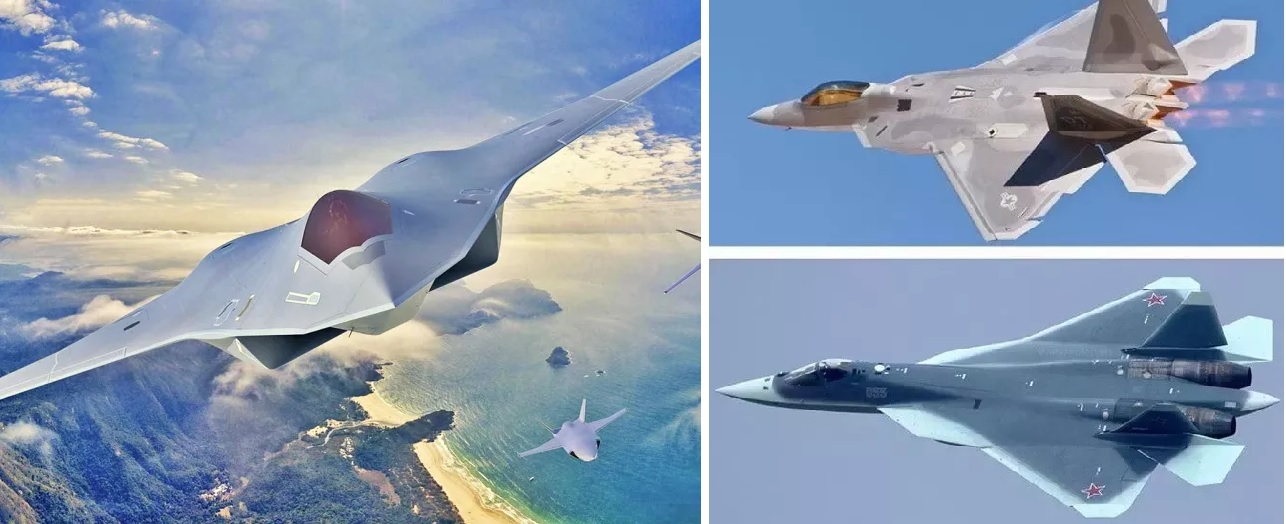 Key Differences Between 5th vs. 6th Generation Fighter Jets
Key Differences Between 5th vs. 6th Generation Fighter Jets
-
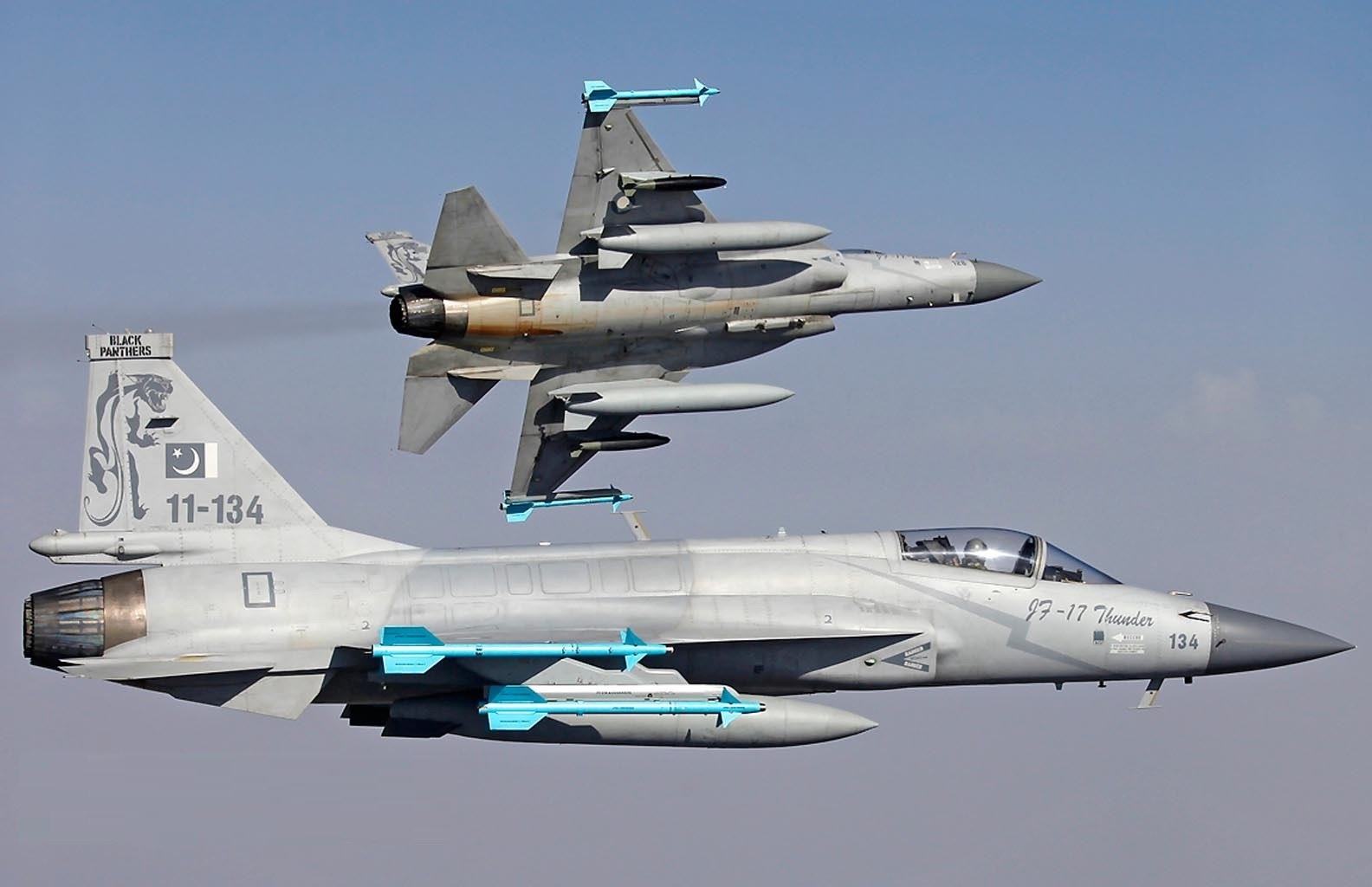 Pakistan Air Force to Unveil Stealth-Enhanced JF-17 Block 4 Fighter Jet by 2028
Pakistan Air Force to Unveil Stealth-Enhanced JF-17 Block 4 Fighter Jet by 2028
-
 India’s AMCA Engine Decision: Safran vs. Rolls-Royce Final Expected by 2025
India’s AMCA Engine Decision: Safran vs. Rolls-Royce Final Expected by 2025
-
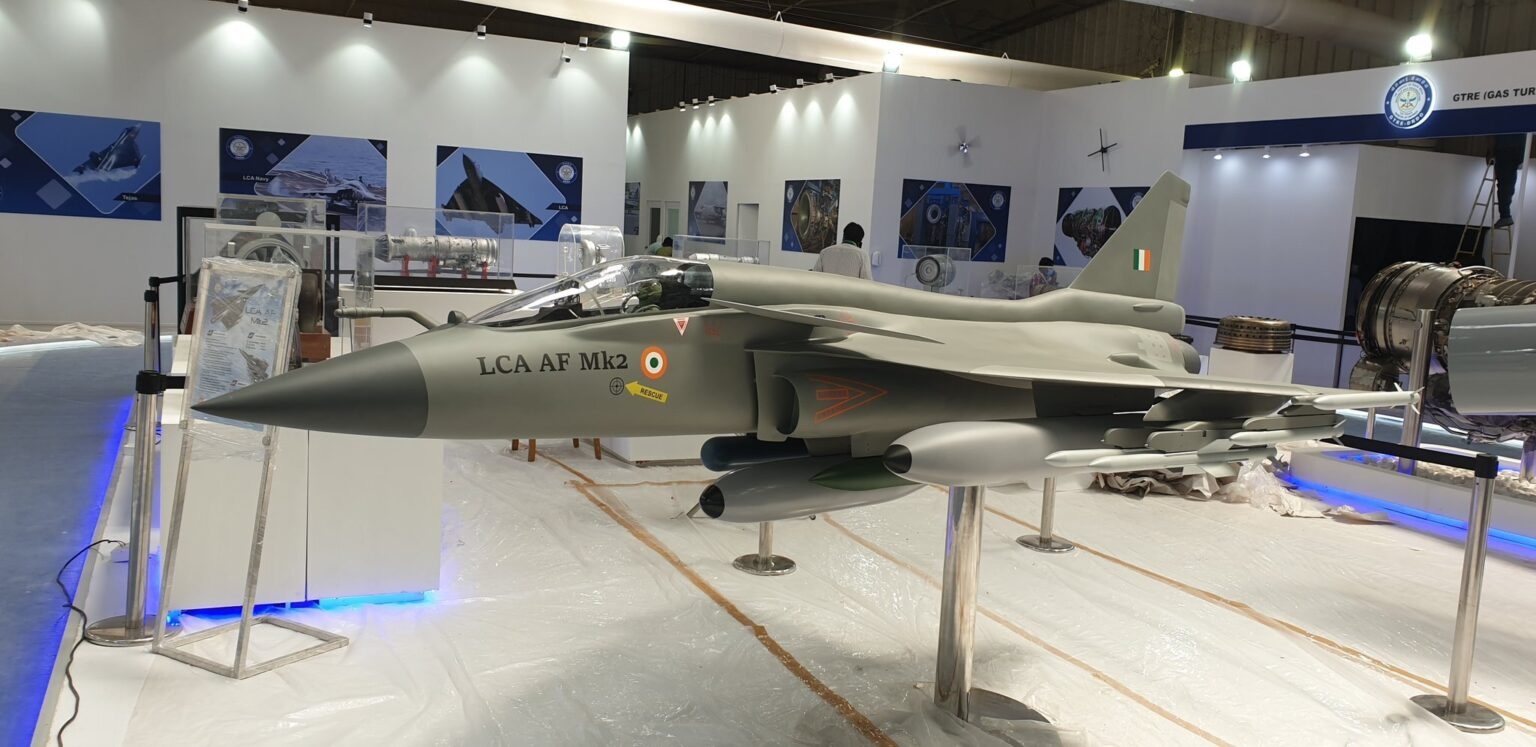 Tejas Mk2 Nears 2025 Rollout as HAL Ramps Up Final Assembly and System Integration
Tejas Mk2 Nears 2025 Rollout as HAL Ramps Up Final Assembly and System Integration
-
 Pakistan Announces 15% Increase in Defence Budget for 2024-25 Amid Economic Crisis
Pakistan Announces 15% Increase in Defence Budget for 2024-25 Amid Economic Crisis
-
 India's TEDBF Program Takes Shape First Flight by 2028: Aiming for Naval Supremacy with Advanced Stealth and Technology
India's TEDBF Program Takes Shape First Flight by 2028: Aiming for Naval Supremacy with Advanced Stealth and Technology
Top Trending in 4 Days
-
 Pakistan Army to Deploy Troops to Gaza by January 2026 Under Trump–Munir Deal, $500 Per Soldier
Pakistan Army to Deploy Troops to Gaza by January 2026 Under Trump–Munir Deal, $500 Per Soldier
-
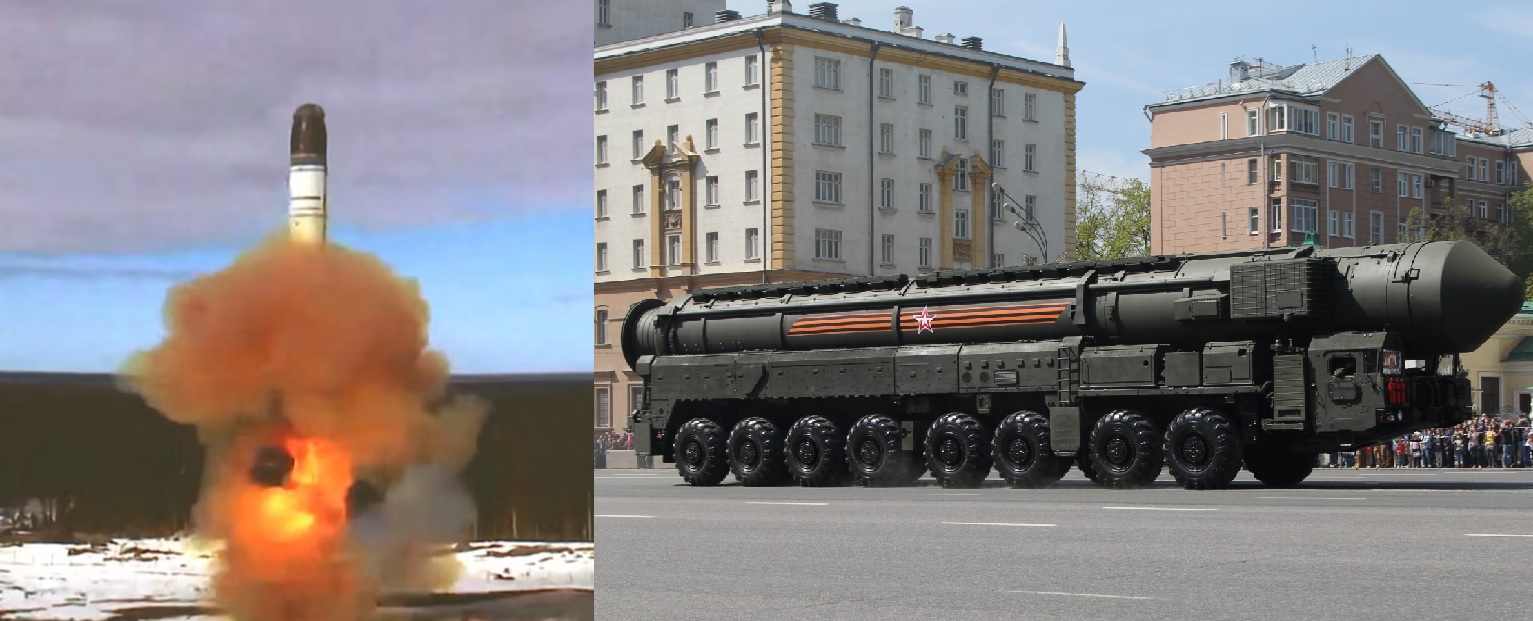 Russia Simulates Full-Scale Nuclear War in Siberia, Deploys Yars ICBMs on Combat Patrols
Russia Simulates Full-Scale Nuclear War in Siberia, Deploys Yars ICBMs on Combat Patrols
-
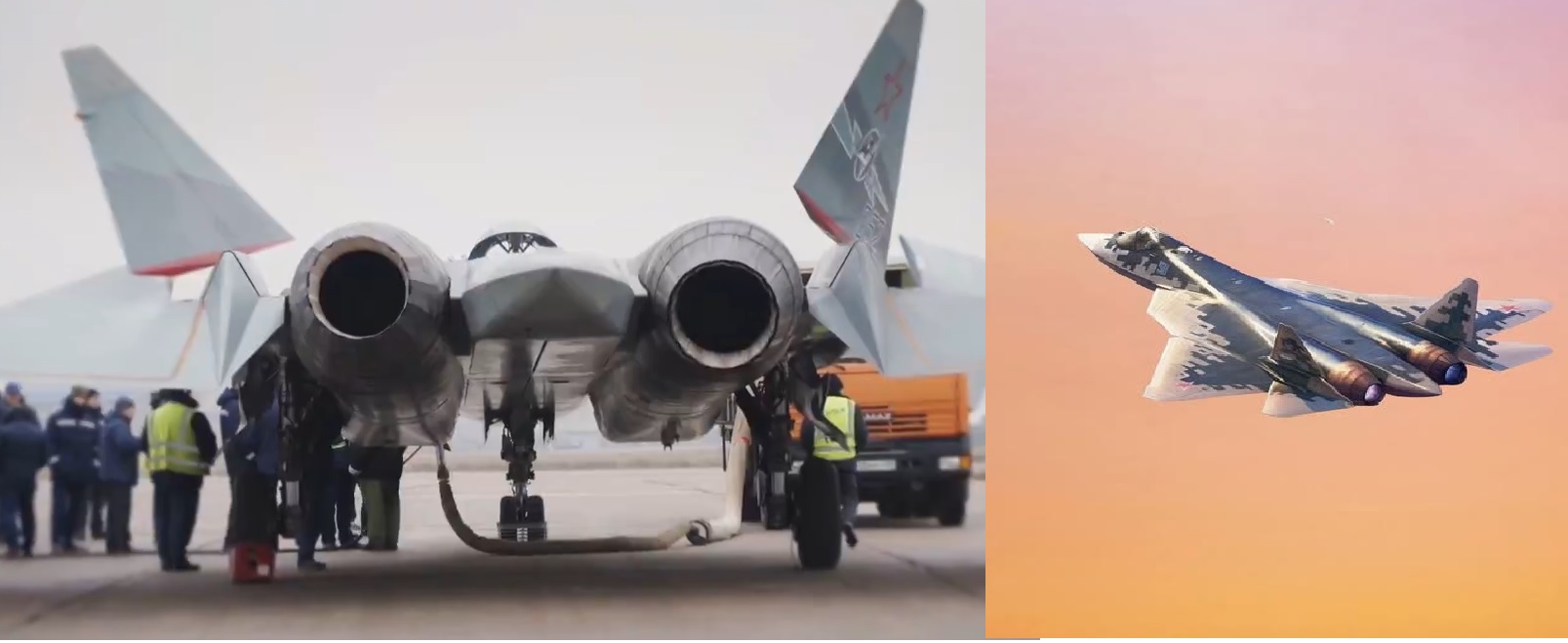 Russian Su-57 Conducts First Flight With Next-Generation Izdeliye-177 Engine
Russian Su-57 Conducts First Flight With Next-Generation Izdeliye-177 Engine
-
 Russian Strike on Mayaki Bridge Threatens Up to 60% of Ukraine’s Fuel Supply
Russian Strike on Mayaki Bridge Threatens Up to 60% of Ukraine’s Fuel Supply
-
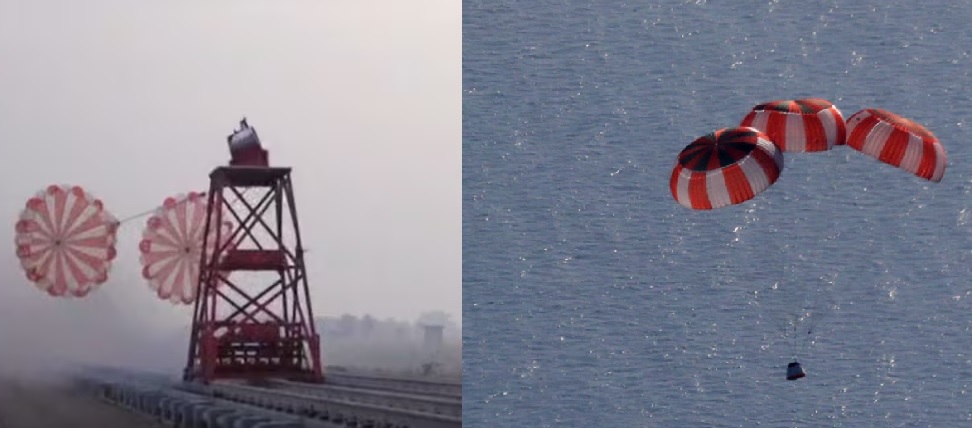 ISRO Successfully Qualifies Drogue Parachutes for Gaganyaan Crew Module
ISRO Successfully Qualifies Drogue Parachutes for Gaganyaan Crew Module
-
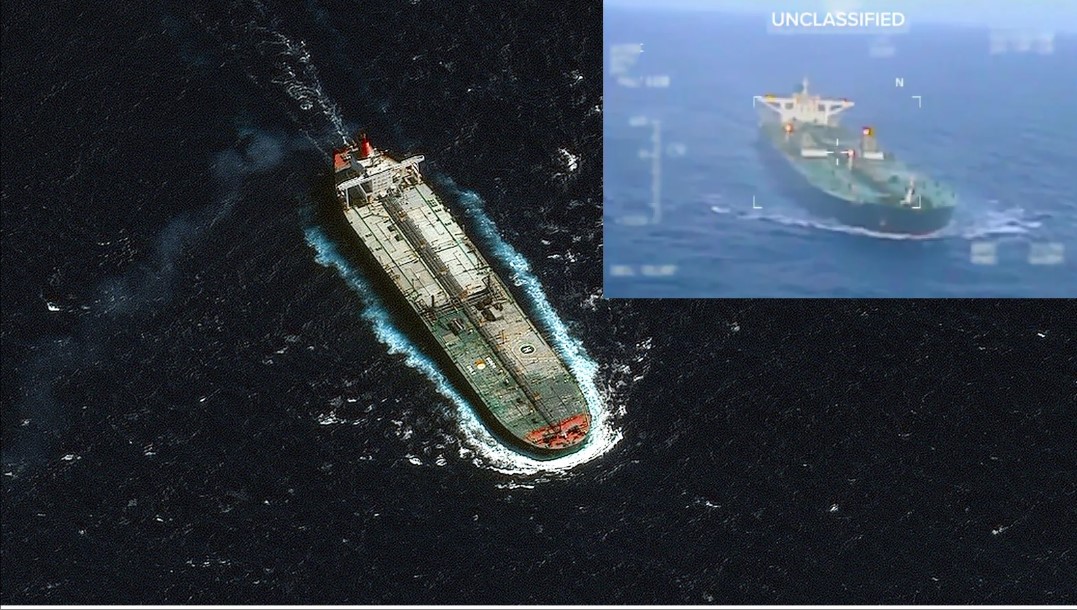 U.S. Seizes China-Linked Oil Tanker Carrying Venezuelan Crude in International Waters
U.S. Seizes China-Linked Oil Tanker Carrying Venezuelan Crude in International Waters
-
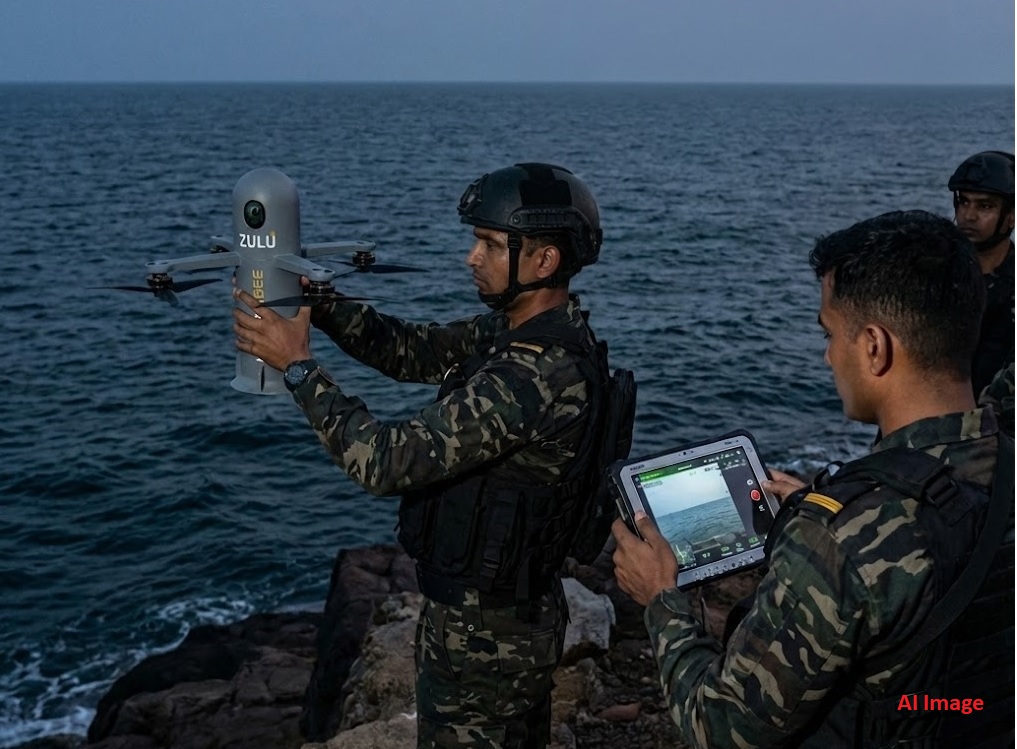 Indian Navy’s MARCOS Induct High-Tech ‘Hoverbee’ Kamikaze Drones for Stealth Operations
Indian Navy’s MARCOS Induct High-Tech ‘Hoverbee’ Kamikaze Drones for Stealth Operations
-
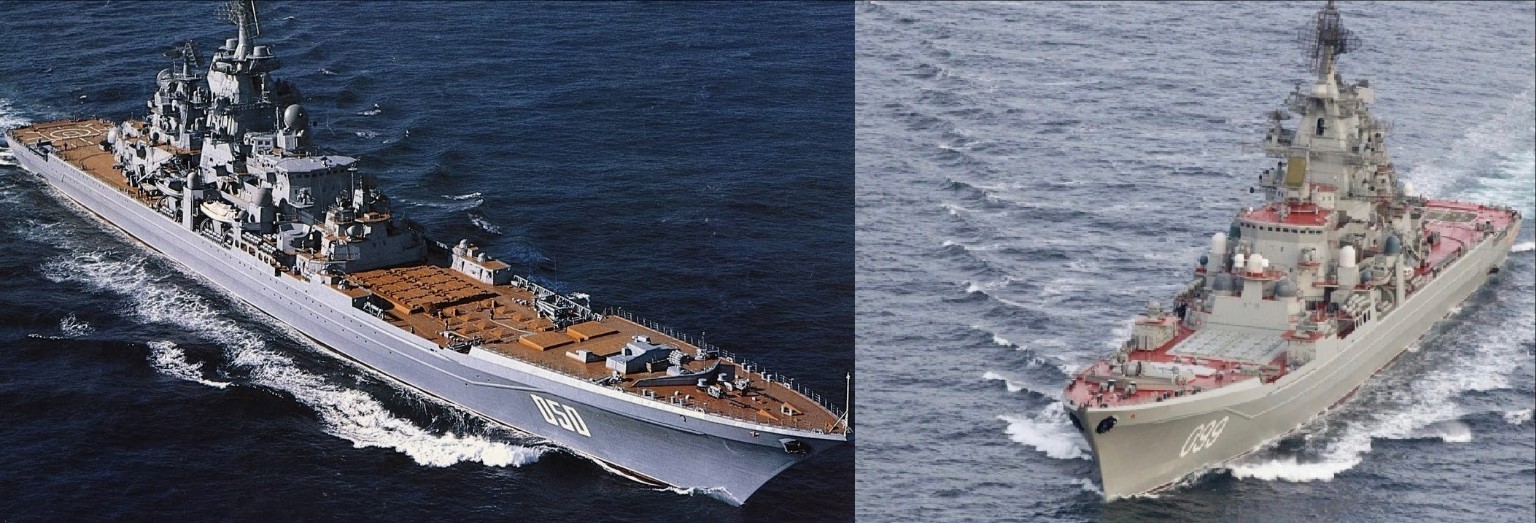 Russia Brings Back Nuclear-Powered Heavy Cruiser 'Admiral Nakhimov ' After Costly Rebuild
Russia Brings Back Nuclear-Powered Heavy Cruiser 'Admiral Nakhimov ' After Costly Rebuild


